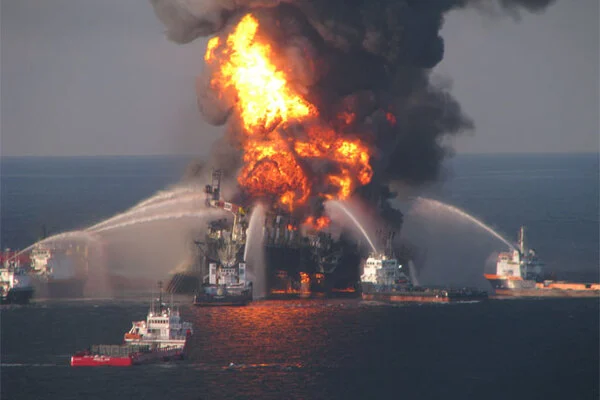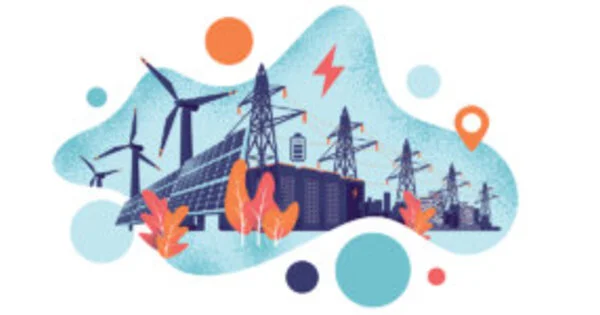There is no one single oil spill that can completely disrupt the global energy supply on its own. The world’s oil supply is a complex and interconnected network of production, transportation, refining, and distribution systems, and there are many factors that can affect the global supply of oil. However, a large-scale oil spill in a major shipping lane or oil-producing region could potentially cause significant disruptions to global energy markets. For example, a spill in the Persian Gulf, which is responsible for about a third of the world’s oil supply, could have a major impact on global energy prices and supplies.
A maritime area three times the size of London is the most vulnerable to oil spills in the Gulf, which can have devastating local and global consequences. The global energy market has been extremely volatile over the last year. The warmer-than-average winter in Europe this year helped to avoid a gas crisis, but the outlook for the coming winter is uncertain as instabilities persist. A single port in Qatar accounts for more than 20% of global liquefied natural gas exports.
A new paper published in Nature Sustainability by a team of researchers from the University of Louvain, the University of Southern California (USC) Viterbi School of Engineering, and the Qatar Environment and Energy Research Institute pinpoints the location of a “high vulnerability zone,” where an oil spill could cause liquified natural gas export facilities and desalination plants along the coast to be completely shut down for several days. According to the researchers, the shutdown could cause significant disruptions in global gas supply as well as an unprecedented water shortage for residents of the Qatari Peninsula, while also jeopardizing containment efforts.
Oil spill vulnerability in the Gulf could exacerbate both the global energy crisis and the local water crisis in Gulf countries. Energy and water security are inextricably linked, and both are threatened by a major oil spill.
Emmanuel Hanert
According to the researchers, being aware of such a vulnerability is critical. Qatar’s export capacity is expected to grow by 64% over the next five years. As a result, this key port will continue to be a critical node in the global energy supply chain. The researchers also express concern about the growing number of tanker accidents in the Gulf, particularly how such accidents may impact critical coastal infrastructures that export a vital source of energy for the planet and ensure the safety of desalinated water for one of the world’s most arid climates.
The paper uses advanced numerical modeling to corollate maritime data transports, atmospheric circulation, ocean currents, waves, and seafloor topographic map data acquired over a period of five years to locate specific, offshore areas of the Qatar Peninsula that are vulnerable to oil spills and assess potential disruptions to the global supply of liquid natural gas.

According to the study, tankers passing through this area pose the greatest risk of oil spills, rather than the numerous oil rigs in the northern part of the Peninsula. If there is an oil spill in this area, the researchers believe Qatar will only have a few days to contain the spill before it reaches the country’s main liquefied gas export facility and main desalination plant. According to the authors, these events could cause disruptions or even a complete shutdown of desalination plants for the day, forcing the country to rely on its limited freshwater supply and driving up liquefied natural gas prices.
To put the size of the issue in context, experts believe that the largest liquid natural gas tankers from Qatar provide enough energy to heat the entire city of London for one week. The study advocates for increased remote sensing using satellite and airborne images in the Gulf’s most vulnerable areas to provide early warning for spills and better model their evolution. The above actions are crucial, say the researchers, to guide mitigation efforts to avoid negative consequences both locally and globally.
The Middle East’s vulnerability to environmental and climatic hazards, according to co-author Essam Heggy of the USC Arid Climate and Water Research Center, is vastly underappreciated. “Global containment of major oil spills has always been challenging, but it is even harder in the shallow water of the Gulf where any intervention has to account for the complex circulation currents, a harsh operational environment, and the presence of highly-sensitive ecosystems on which three million humans rely for drinking water.” “I hope serious resources are put into resolving this vulnerability,” he added.
“Oil spill vulnerability in the Gulf could exacerbate both the global energy crisis and the local water crisis in Gulf countries,” said co-author Emmanuel Hanert of the University of Louvain. He went on to say, “Energy and water security are inextricably linked, and both are threatened by a major oil spill. We identified Gulf sea areas where an oil spill would pose the greatest risk to desalination and liquefied natural gas export facilities. Satellite surveillance should prioritize detecting oil spills as soon as possible in order to limit their impact.”















